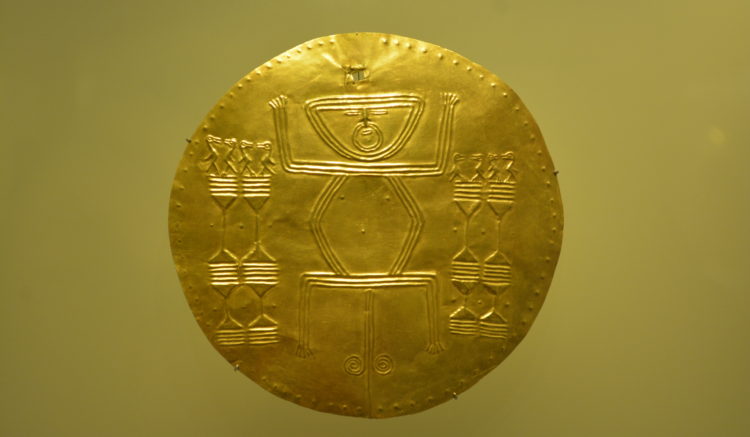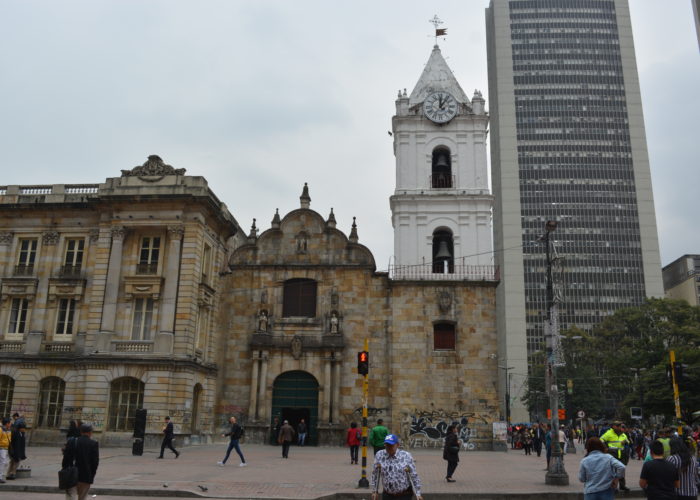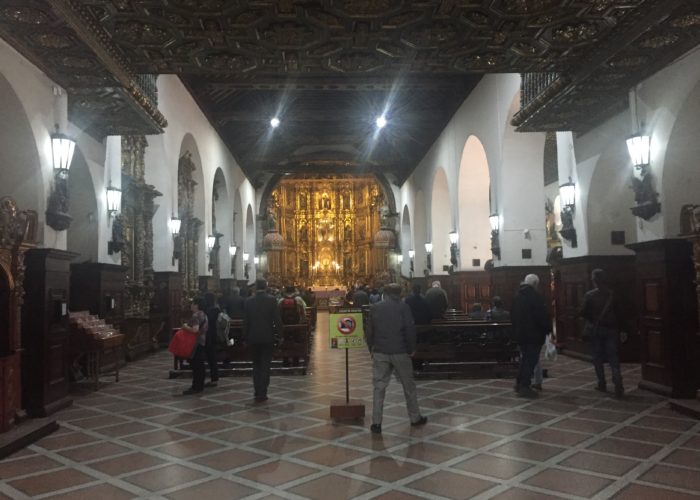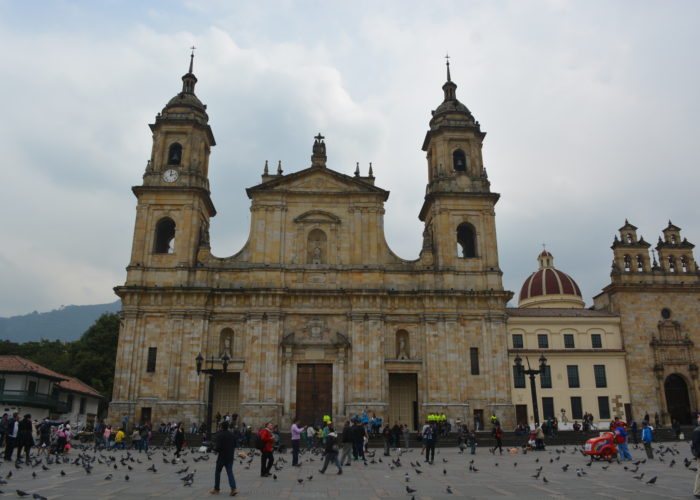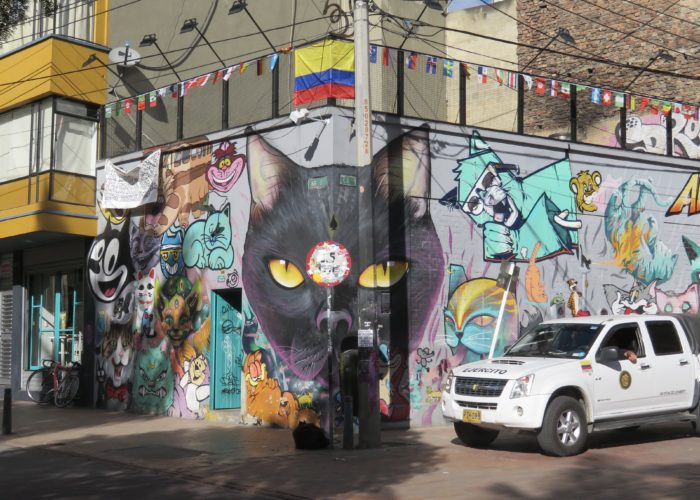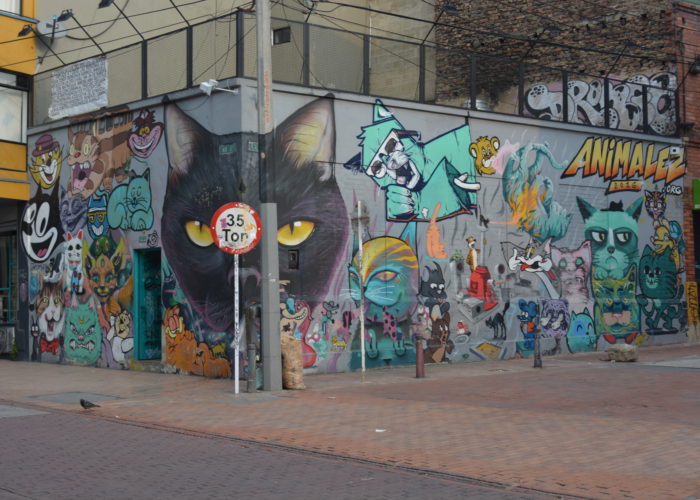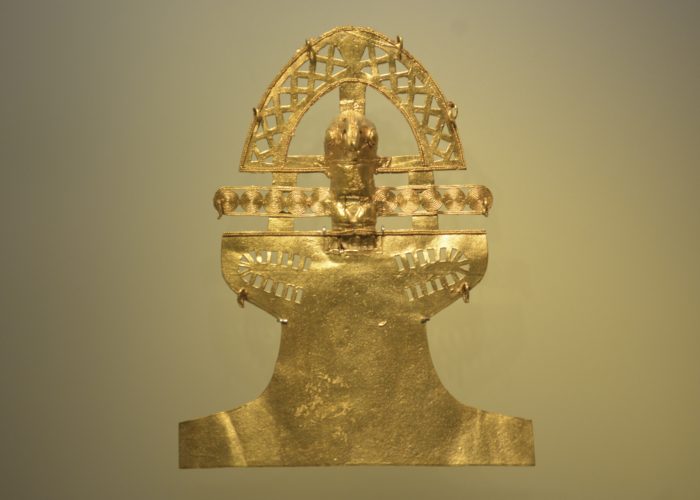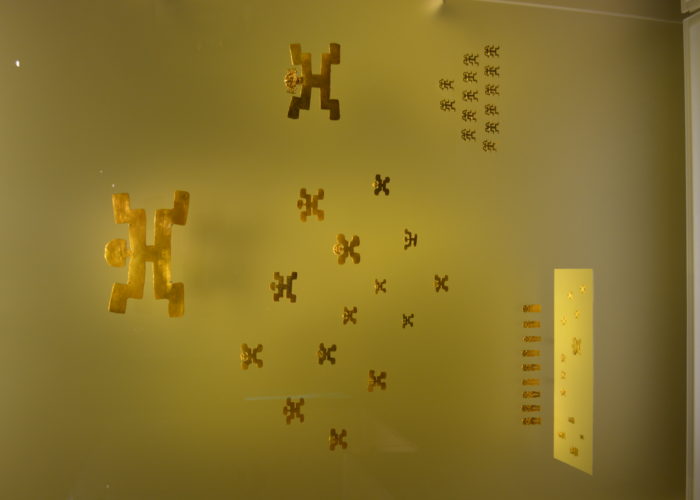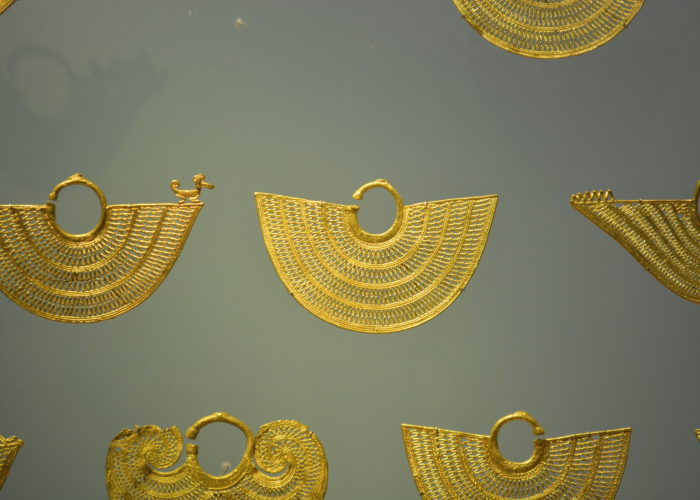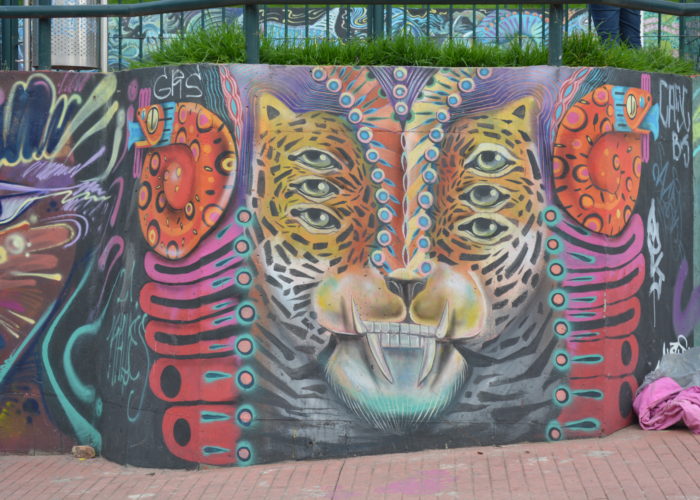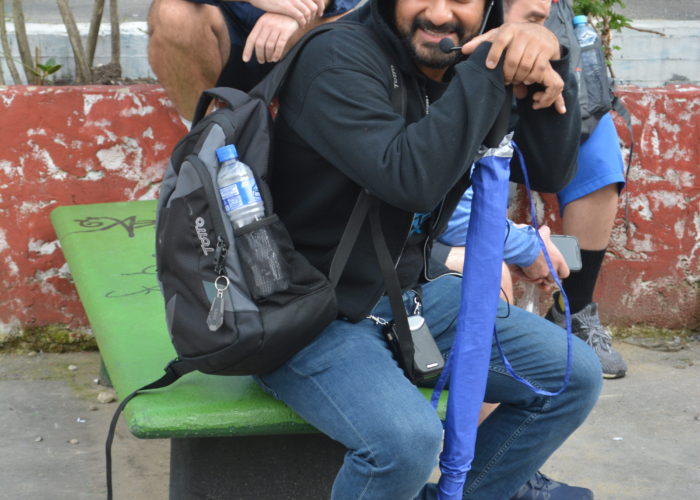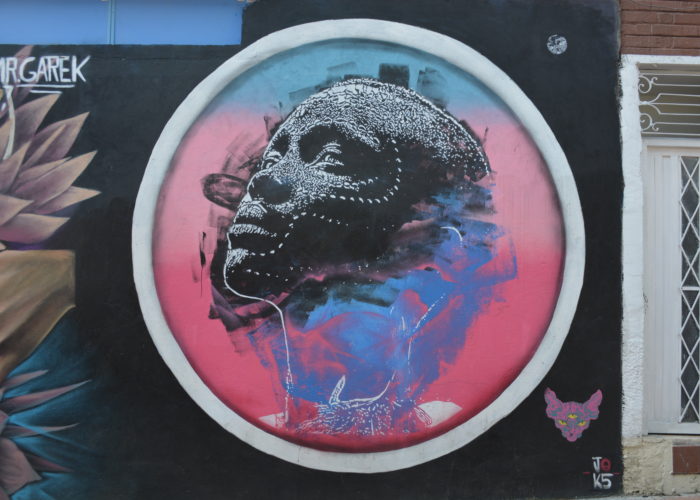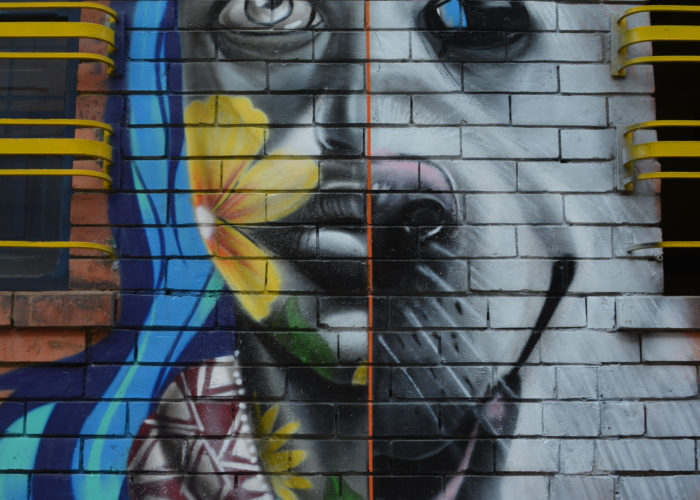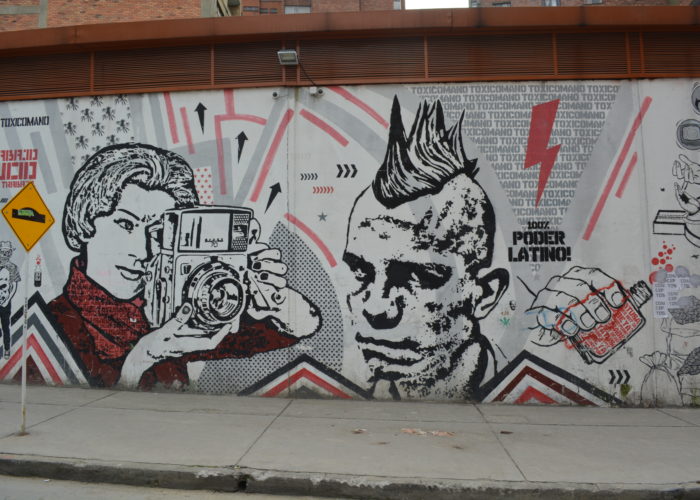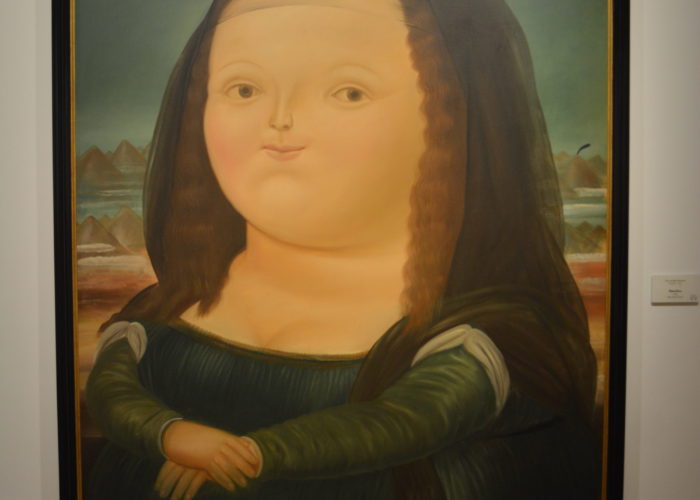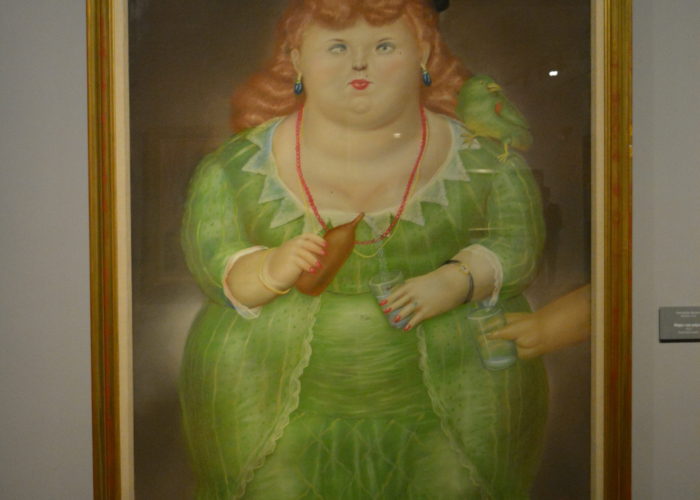After some 82 days in Brazil, we returned to Colombia for the final leg of our journey and complete the journey down the Magdalena Valley to the coast which we could not fit in our earlier visit to Colombia. As with most visits to Colombia, our flight from São Paulo entered Colombia at Bogotá ‘s modern El Dorado International Airport, most journeys to Colombia almost inevitably go through Bogotá.
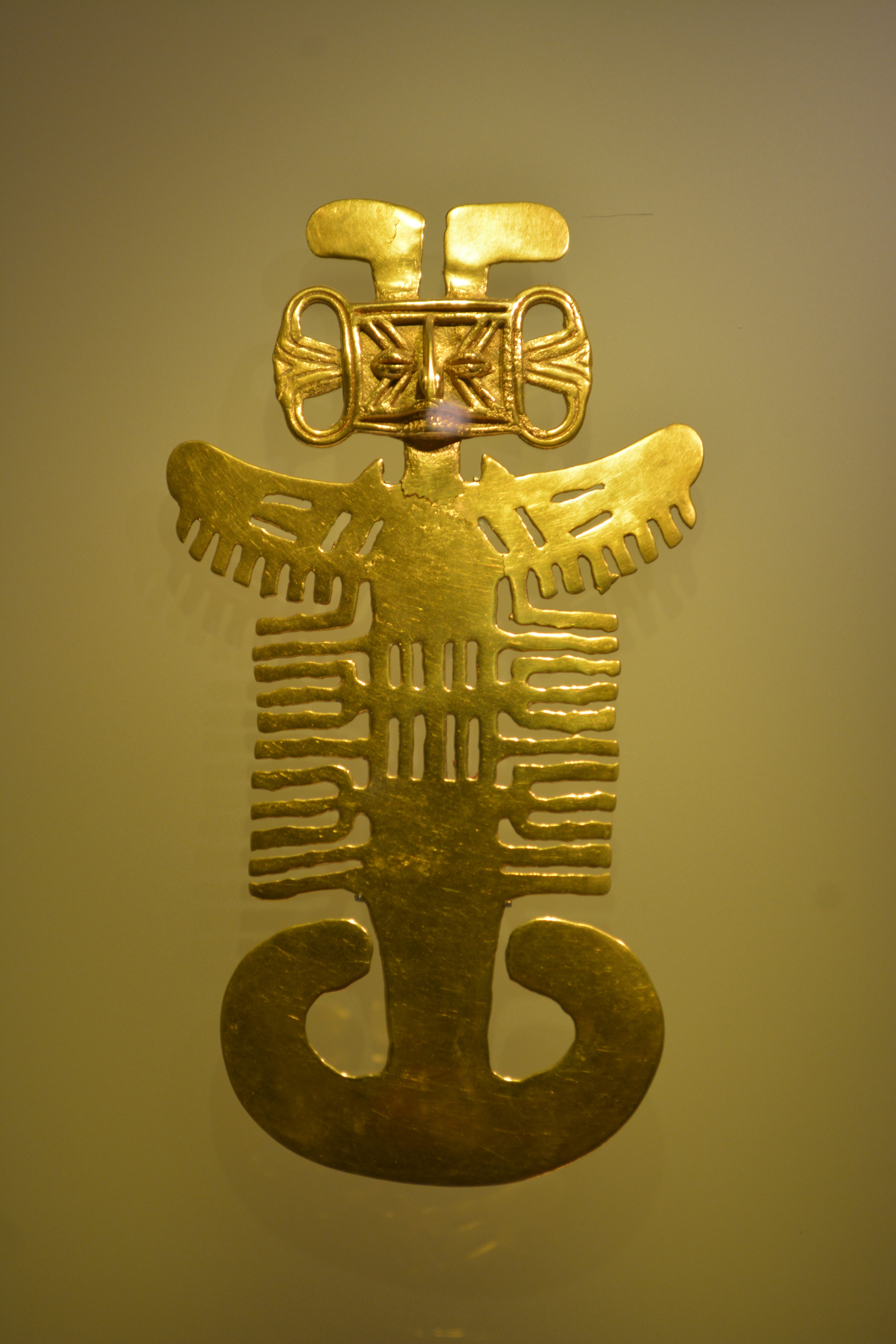
Our previous visits, Bogotá – Botero and Street Art and Bogotá – Second Visit, were both principally on a Monday, when one of Bogotá’s principal sites the world renowned Museo del Oro was closed, so we made it our priority to visit this museum. The Museo del Oro is located in Parque Santander, one of Bogotá’s principal squares, in a modern bank building complete with all the security one would expect for a museum containing so much wealth. The museum is very well presented, with just enough information in both Spanish and English so as not to overwhelm the visitor and the gold exhibits are displayed in modern cabinets with ambient lighting that shines on the smooths surfaces, while the individual exhibits make a shadow on the light gold background.

The exhibits are presented in a way that tells the individual stories of the various indigenous pre-Colombian cultures that made them. Also similar exhibits are displayed in groups that both emphasise the unique shapes but also help highlight subtle differences. Probably pride of place is a small raft with several carved figures, which was found in Laguna de Guatavita to the North of Bogotá. The legend goes that the gold raft was thrown into the lake along with many other offerings as part of an inauguration ritual for one of the local rulers. This discovery confirmed to the Spanish conquistadors that there was a lot of gold to be discovered and fortunes to be made in South America.
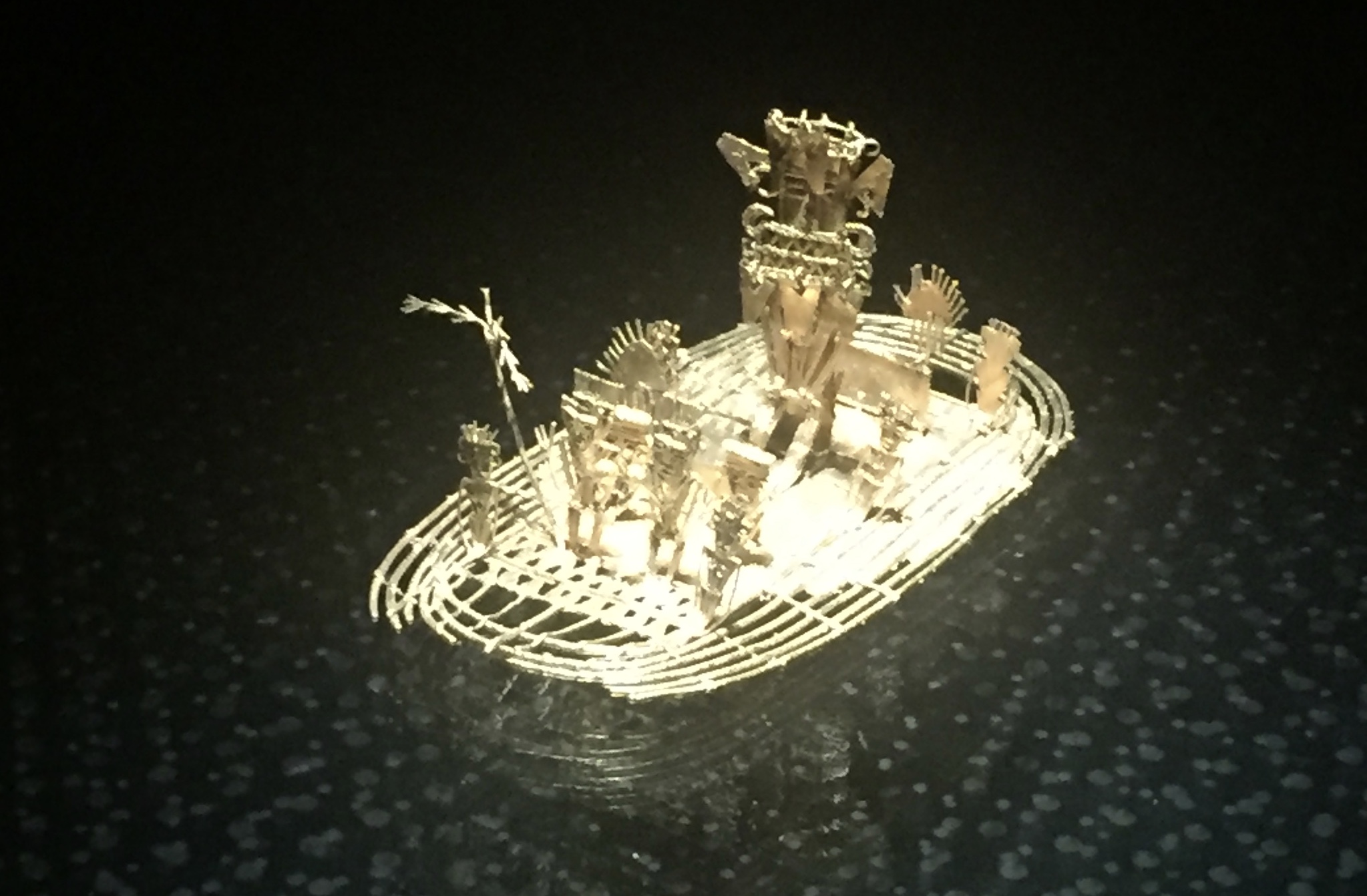
One of the other highlights is the various funeral artefacts that were found in both San Agustin and Tierradentro. Indeed the mock up of one of the underground tombs of Tierradentro complete with funeral urns and other items helped complete the image of what Tierradentro was like before all the tomb raiders ransacked the site that we visited earlier on our journey, see Tierradentro – Remote Ancient Burial Chambers.

Sitting on the other side of Parque Santander is the Iglesia de San Francisco, and at mid day the church was open getting ready for a service. With the random opening times that many churches have, we popped in. Unsurprisingly, like all San Franciscan churches all over the continent, this church also had vast quantities of gold leaf on many of its wooden carvings. The outside of the church is much less ornate and also on some of the old walls has a number of graffiti tags.
Moving down to Plaza de Bolivar, the official centre of Bogotá and the place where the city and country’s political life reverberates around. Indeed there was a heavy police presence all over the city centre, complete with riot shields in case the many demonstrations get out of control. At the time of our visit there were a number of demonstrations against the new right wing president’s starving of funding for universities and higher education. Bogotá contains many universities, many of which are attractively built in small red bricks.
The Catedral Primada de Colombia, the main cathedral in Bogotá was also open ready for a service. The cathedral inside is a vast cavernous building and while lacks the ostentatious wealth of the San Franciscan church, has one of the most impressive organs. The keyboards sit just off centre in the middle of the nave while the organ pipes dominate the upper walls of the right hand transept.

After finding one of Bogotá’s burgeoning microbrewery pubs just by Parque de las Periodistas, we took another of of Bogotá’s free graffiti tours round the Candelaria district. The tours are run twice a day by volunteers, who know many of the artists and provide a fascinating insight into the socio political background that inspires the many graffiti artists. La Candelaria is one of the premier locations for graffiti and street art in South America. São Paulo, Valparaiso and Medellin in particular also have world class street art that we have seen and La Candelaria is truly right up there with the best. The city authorities have a quixotic relationship with the artists, but for the most part tolerate it today. In the past there were a number of serious incidents where young artists were shot by the police, who then proceeded to cover up their actions. Today if the building owner gives their permission then the activity is deemed to be quasi legal and no action will be taken.
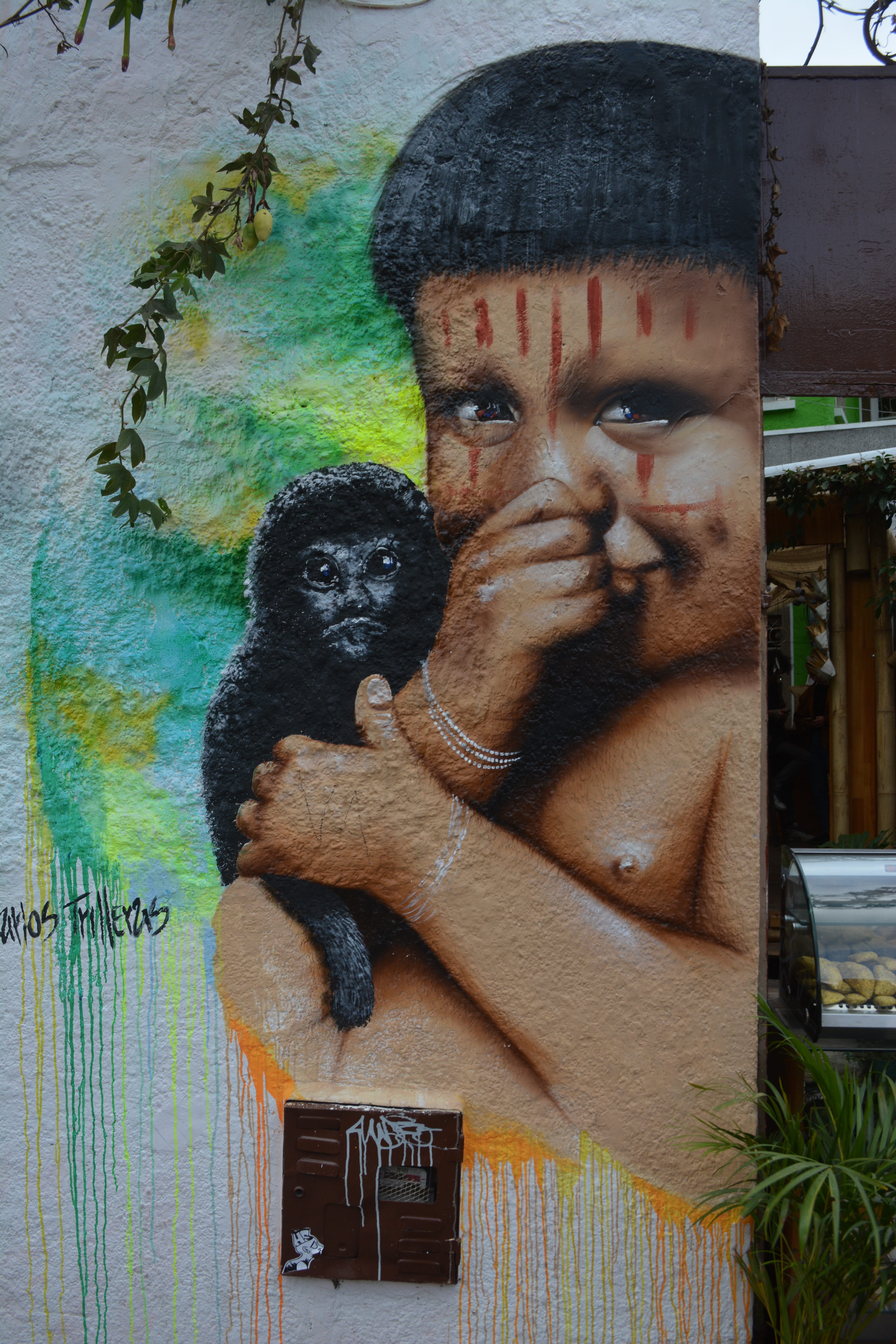
There is a whole code of ethics between the artists, many of who will collaborate with each other to produce some enormous murals. There are also many examples of international cooperation with artists from around the world.
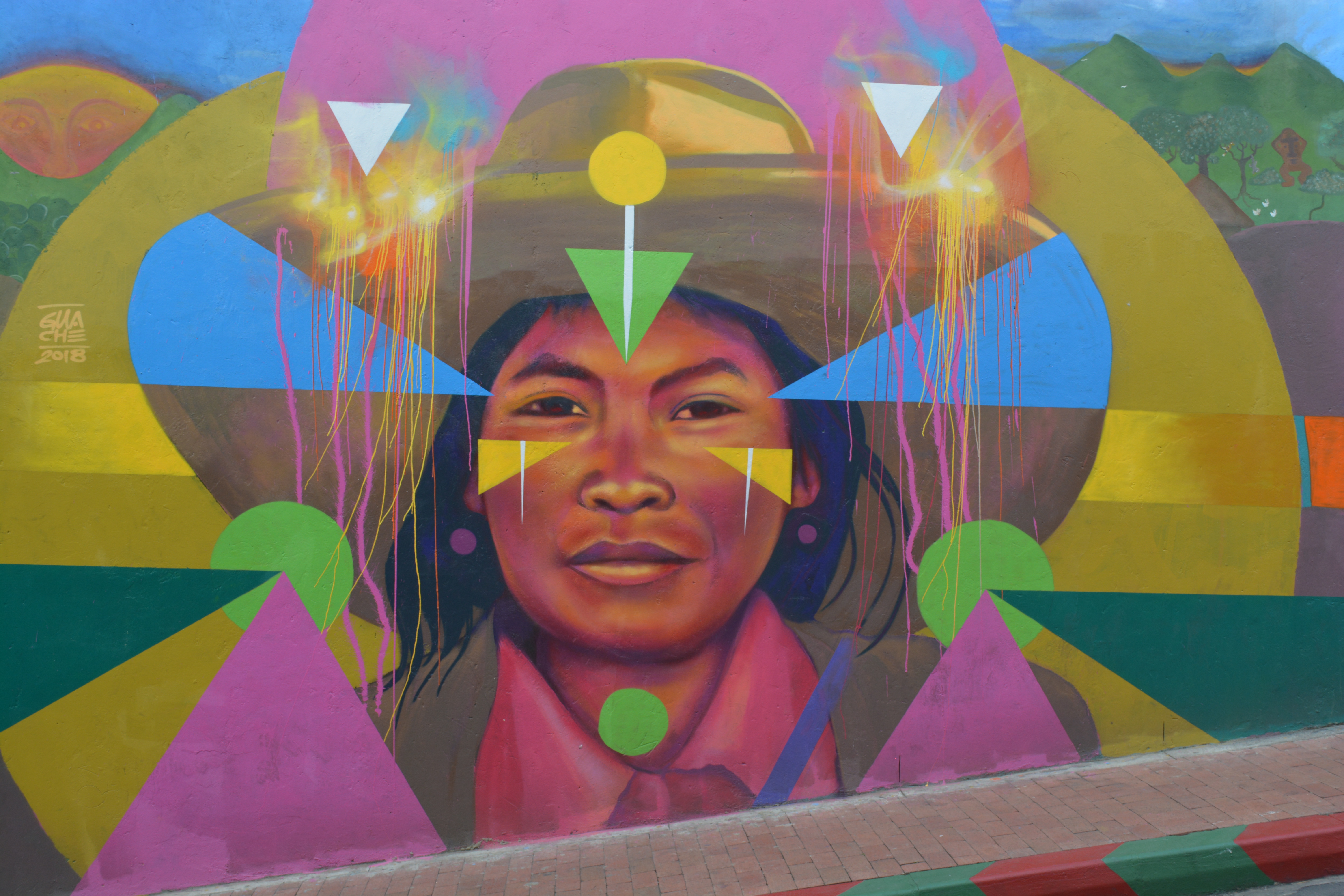
This tour took us to some different locations and examples of street art than our earlier visit in June. The guide, Jeff, was really impressive and being a qualified anthropologist, brought some amazing insight to the art, the artists and the socio political inspirations that drive their work. Street art is a continually evolving phenomena and new works continue to appear while old works tire and get replaced. One of the most disappointing changes was some alterations made by the city authorities to a major work on cats. Originally the work included a lamppost to the front of the painted wall, which was also painted to blend in with the work, depending on where you stand. In between our visits, the city authorities repainted to whole lamppost grey thereby ruining one of the most remarkable pieces of work.
To complete our visit to downtown Bogotá we returned the the Museo Botero, a never ending source of pleasure. His art, especially all the fat people never ceases to bring a smile to you face. His art together with his donations of works by Picasso, Freud, Henry Moore and the full range of French Impressionists is a wonderful bequest to his country. What is more, the museum has free entrance, so is accessible to everyone.
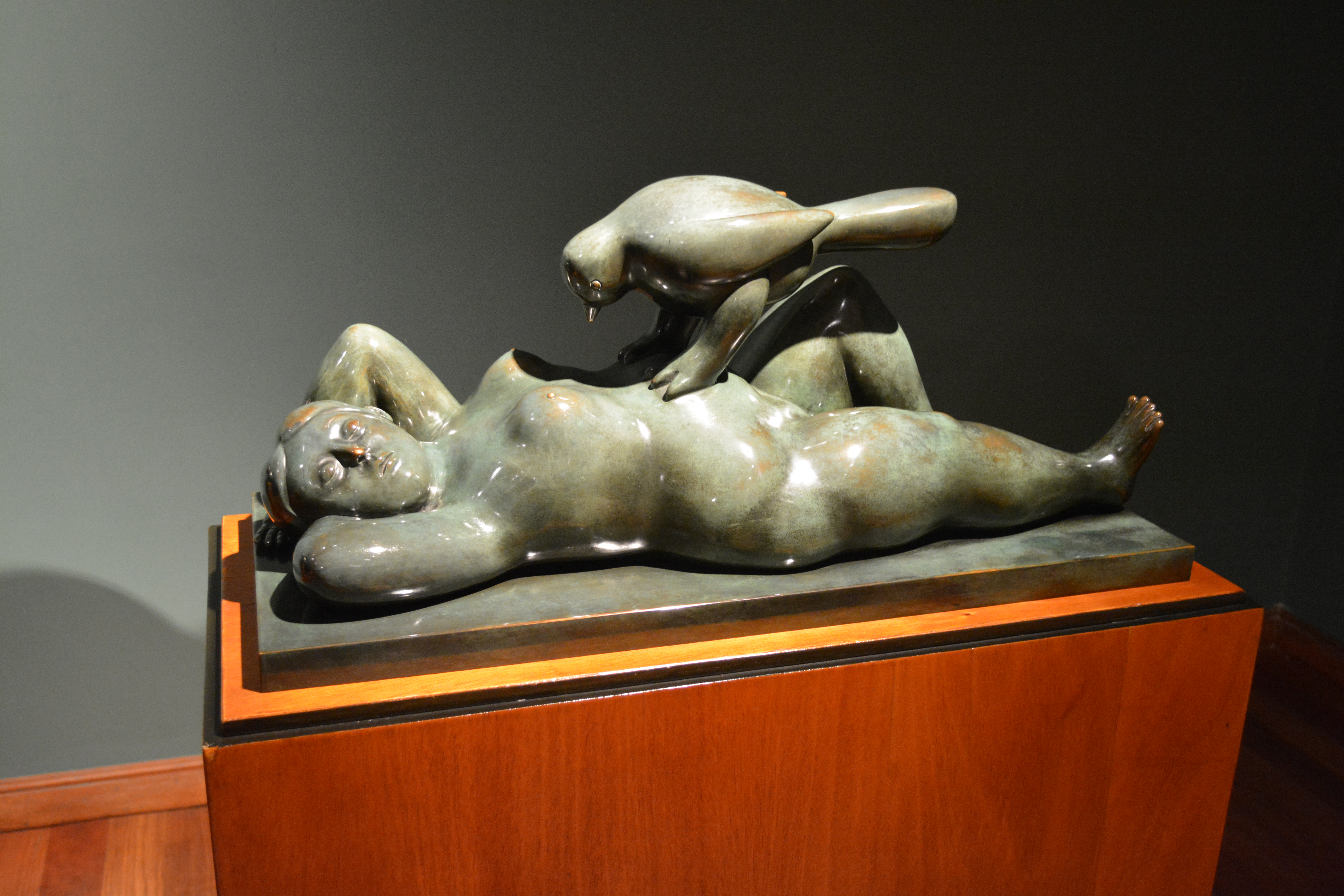
Back in the Chapinero area we found a new bar build by the Bogotá Beer Company, one of Colombia’s finest microbreweries, that serves on draft all their various beers and also good quality pub food.
Date: 05/12/2018 to 07/12/2018
